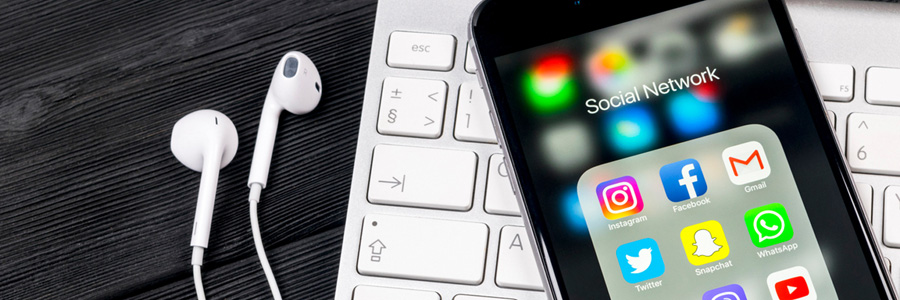A Concise Guide to Mobile Marketing
Marketers used to say that mobile was the future, but now we’ve gone past the tipping point – the number of mobile users has already exceeded the number of desktop users out there.
What’s more is that 80 percent of users access social media using a mobile device, while 60 percent of traffic comes from mobile.
With these numbers in mind, how do you make sure that you have a solid mobile marketing campaign?

Mobile marketing strategies to consider
- Tailor your content to the platform
There are numerous social media platforms, and every one of them is unique. Their layouts, for instance, differ when accessed from a mobile device. Approach them in distinct ways and focus only on the ones that yield that highest return for your brand.
Marketing fatigue is another reason why you should match your content to the idiosyncrasies of your chosen platform. Cross-promoting the same thing across multiple channels can cause your followers to unsubscribe from your brand.
Content is displayed in a single column on Facebook mobile. Grab users’ attention as they scroll down the page by posting engaging content. Note that website links and image posts are displayed differently – Facebook pulls graph images open for web links, while image uploads take up slightly more space.
If you want to highlight images while at the same time get users to click on links, simply place a link in the description below the image.
Web links on micro-blogging site Twitter are displayed in the same way, with the hero image as the post’s main image. Photos should be rectangular, not square, in order to fit into the feed.
Instagram, which used to accommodate only square-shaped photos, now allows users to post portraits and landscape images.
Most brands, however, still prefer the square image format because it takes up the most space on the news feed. Images with a different orientation are bound to look out of place and create some white space.
- Use a high-quality cover photo
Your header image is the first thing people see, and it can help you make a lasting impression. Make sure that the image is professional-looking, and won’t get pixelated or cut-off when resized for the cover photo space.
Apply the same design concept across digital channels for brand cohesiveness. This concept should reflect your brand and send followers the message you want to convey. It should also be consistent despite the image variations required by each platform’s quirks and sizing limitations.
- Make the most out of your phone’s native camera
Whipping out an SLR every time you want to make a live update is not only tedious – it also undermines your brand’s authenticity and spontaneity.
An 8-megapixel phone camera can capture high-quality images with the right lighting and angle. You can also start editing using photo enhancement apps as soon as you take the shot.
Best of all, you can take selfies with a phone camera. Numerous brands have found success with selfie social media campaigns, which tend to be relatable and authentic-looking.
- Follow image guidelines
Ideal image dimensions vary across social media platforms, and within the platforms themselves. For instance, the ideal dimensions for image posts and web links on Facebook are different.
Image posts look their best at 1200 x 628 pixels, while images for web links should at least be 948 x 788 pixels – otherwise, they won’t take up the whole space in the news feed.
Your FB profile photo should be 180 x 180 pixels, while your cover image should be 851 x 315 pixels.
For Twitter, profile photos must be 400 by 400 pixels, and cover photos, 1500 x 500 pixels. Shared images generally look good at 1024 x 512 pixels.
Images for Twitter’s summary cards should be at least 120 x 120 pixels and less than 1 MB.
Ideal image dimensions for Instagram are 1080 x 1080 pixels for square photos, 1080 x 1350 for portraits, and 1080 x 566 pixels for landscape images.
- Establish a consistent schedule
Post too little, and your followers might forget about your brand and move on to another one. Flood their news feed and they might unsubscribe.
You’ll need to find a balance between the two – consistency matched with the right schedule is key. Make regular but relevant updates, and take care not to bombard your followers with content.
The frequency of your posts will also depend on the nature of the social media platform you’re using. While it’s not unusual to post 10-15 times a day on Twitter, the same amount of updates on Facebook and Instagram will come off as spam.
Use analytics to identify your top-performing posts and which time of day they do best, then sync your schedule accordingly.
Most users check social media on their phone while commuting to work or when they’re home at night, giving you a window for maximum attention.
- Make live updates
Streaming and live tweeting lets brands talk to followers about upcoming or on-going events. The thrill and spontaneity of live updates simply can’t be matched by scheduled posts, which is why platforms like Snapchat are so popular.
Start conversations and keep them going by posting live updates. Just remember that quality and consistency shouldn’t suffer just because you’re on mobile and posting in the heat of the moment. Live updates should all tie back to your brand.

Tremendous potential
When done right, mobile marketing helps you reach a bigger and more diverse audience while at the same time allowing for personalized interaction. User response is easy to track. Since content is easily shared among users, there are viral benefits to it too.
With all these strategies in your arsenal, you’ll reap the benefits of mobile marketing in no time.




